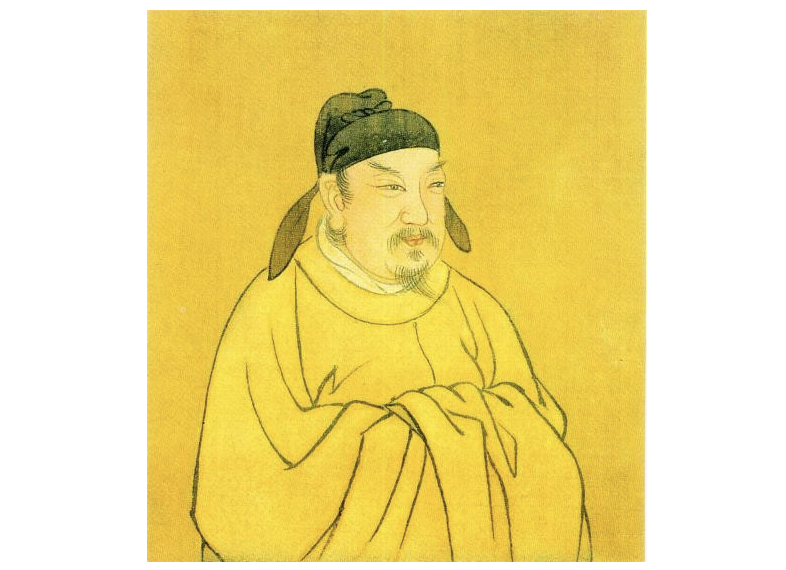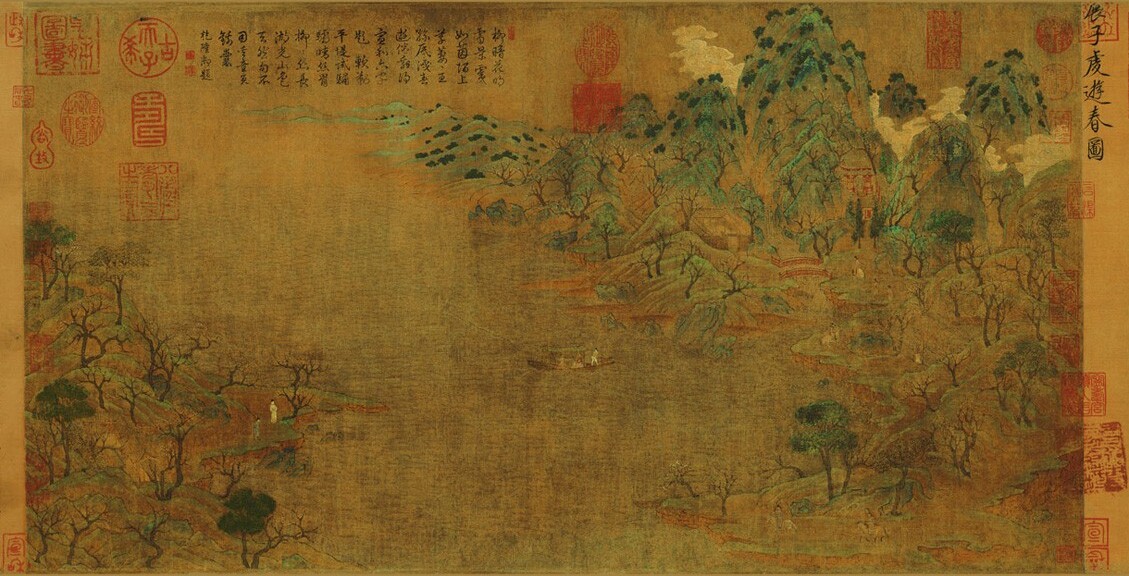Graduate Student Associate, Lu Kou, examines poetic improvisation on an assigned topic in the Chen dynasty court.

Medieval Chinese court poetry featured one special form of composition: poetic improvisation on an assigned topic (fude 賦得). While the practice was ubiquitous in later literati circle, it first emerged and gained popularity in the robust court culture of the southern dynasties (420–589 CE). During court gatherings, courtiers, princes, and even the emperor himself often needed to demonstrate publicly their poetic competence, and one of the effective means to gauge literary talent was the assignment of a random topic (either a concrete object nearby — candle, mat, blossoms, or a more abstract theme) for impromptu verse elaboration. Not only the composition was strictly timed, but the poem should also aptly incorporate relevant allusions and employ a variety of poetic techniques to make it appealing to a courtly taste.
During my research on the Chen dynasty (557–89) poetry, I was first surprised at the large percentage of fude poetry that survived from the period (about 10 percent of the total number of extant poems) and also the little critical attention given to this body of text. After reading them closely and especially situating them in historical context, I am able to see the remarkable innovation of Chen courtiers regarding this poetic practice, and how their conscious exploration of the limit of poetic expression in this highly formulaic form contributes to the refinement and sophistication of the art of poetry. I will delineate in the following some of the novel aspects of the Chen fude poetry.

While it was common to select one single object for improvisation in the Liang dynasty (502–57), courtiers from the Chen deliberately tried to escalate the difficulty of the practice by making the assigned topic increasingly complicated. It is first worth noticing that they paid much more attention to topical specificity. Instead of “bamboo” in abstraction, for example, poets would be assigned with specified topics such as bamboo in mountain (shanzhong zhu 山中竹), lining up around a pool (jiachi zhu 夾池竹), or beside household stairs (linjie zhu 臨階竹). Second, Chen writers also purposefully combined two random images together as a composite topic for composition, such as “white clouds facing over wine” (baiyun lin jiu 白雲臨酒), “white clouds embracing hidden rock” (bai yun bao youshi 白雲抱幽石) and “snow reflecting boat at night” (xue ying yezhou 雪映夜舟). It also appears evident that elite members from the Chen had a prominent penchant for selecting one famous poetic line by previous canonical figures and amplifying it with a new poem. The above-mentioned “On ‘White Clouds Embracing Hidden Rock,’ Composed as an Assigned Topic” (fude baiyun bao youshi 賦得白雲抱幽石) serves as a good example in which the five-character line is taken verbatim from one poem by Xie Lingyun 謝靈運 (385–433). This practice ultimately became institutionalized in the Tang as a part of the civil service examination.

The intended complication of the assigned topic demands from court poets not only a careful observation of the natural world for inspiration but also skillful, original representation of a coherent poetic scene consisting of the prescribed objects. Meanwhile, the deployment of literary allusion is to be nuanced. While mere familiarity of certain cultural lore is sufficient for a poem on a single object, such as bamboo, lotus, or clouds, the complexity of composite topic (sometimes with quite incompatible images) requires that poets integrate in one poem a variety of conventional references/allusions/stories associated with those individual images to properly depict their intricate interplay.
Trivial and technical as it may seem, this process of topical complication in Chen dynasty fude practice deserves serious treatment, especially for a reappraisal of the literary legacy of the period. Scholarship on Chen dynasty poetry has long been focusing on the so-called “Palace Style” (gongti 宮體) which is regarded by scholars to refer to poems thematically describing boudoir or female beauty. Moreover, the disparaging claim inherited from the seventh century that the southern culture was irremediably “decadent” is still received as some kind of truism among readers even today. By investigating these fude poems — hardly any of which fit under “Palace Style” rubric — one can reflect on the inadequacy of the established term to generalize more diversified literary production. Meanwhile, the survival of the corpus in Tang imperial encyclopedias (which in many cases served as compositional manuals) also attests to the wide influence of southern poetic culture in northern courts despite northerners’ indictment against the South in political and moral realms.


